I had heard of Lappajärvi, the great crater lake, from some friends many times. So, when I got the chance to visit that part of Southern Ostrobothnia, I jumped at the chance. Lappajärvi is one of the larger impact crater lakes in Europe. The lake is a laboratory for scientists studying impact craters and Earth’s geological history. This can also provide valuable information about the potential hazards posed by celestial body impacts and their implications for life on Earth. In short: very cool!
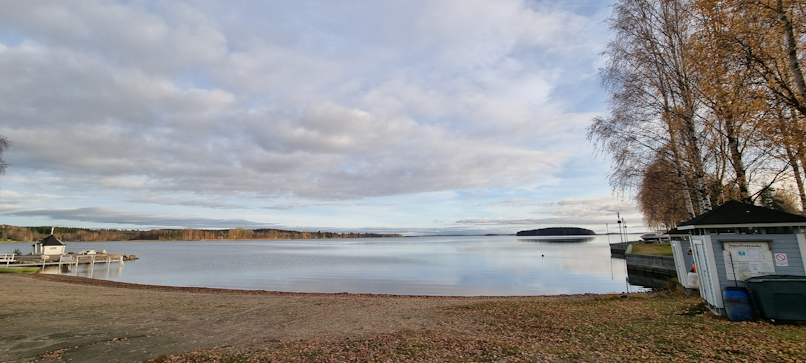
The geological wonder of Lappajärvi
Nestled in the picturesque landscapes of Southern Ostrobothnia, Lappajärvi is evidence of Earth’s ancient history and the powerful forces that shape our planet. This peaceful lake is the result of a fascinating event that occurred around 77 million years ago.
Lappajärvi appeared on the “map” during the Late Cretaceous period when a meteorite or an asteroid had an intense collision with Earth. Despite millions of years and plenty of erosion, the distinct characteristics of the impact crater can still be seen. The Late Cretaceous period occurred from about 100.5 million years ago to 66 million years ago. It ended with the mass extinction event that led to the end of of dinosaurs among many other life forms. (No, Lappajärvi was not that meteorite impact – the impact that ended the dinosaurs hit the ground at the Yucatán Peninsula in present-day Mexico.)
While not the largest impact crater even on a European scale, Lappajärvi still boasts a considerable size with an estimated diameter of around 23 kilometers (14 miles). This places it among the notable impact structures in Europe, contributing to its significance among other impact crater lakes. Rocks and sediments in and around the lake provide tons of information, which helps scientists understand the collision and its after-effects in the environment.
Lappajärvi is also utilized to teach people about various aspects of Earth science, astronomy, and environmental studies.
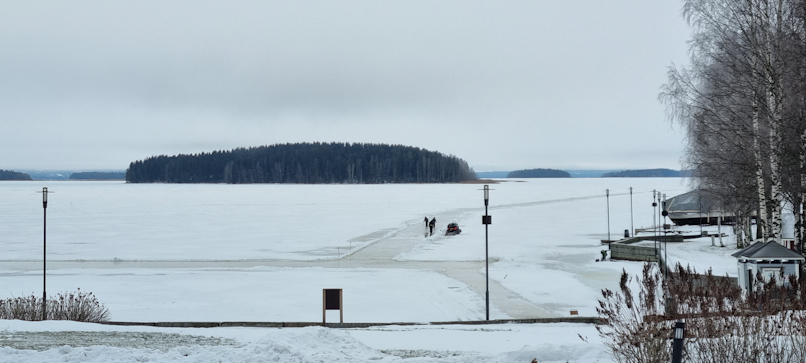
What to see and do at Lappajärvi?
One place I recommend is the geological museum at hotel Kivitippu. It has a great meteorite exhibition suitable for all ages. There’s even a rock sample from the Moon – and all free of charge! Naturally, Lappajärvi is also an excellent destination for avid fishers (just remember to bring your fishing permit). There’s also a short nature path that starts from hotel Kivitippu but be careful to duck when you hear “Fore!” as there’s a golf course on the peninsula.
There are also signs of ancient settlements around Lappajärvi. One example are ancient Bronze Age burial sites, one of which is located right in front of hotel Kivitippu entrance. These burial sites are also known as giant’s stoves, hiidenkiuas in Finnish. Finns have thought that goblins (hiisi) or devils lived inside these mounds. Another term that applies to these burial mounds is lapinraunio (Lappi ruins), originally a folk term associated with ancient Sámi settlements. Nowadays, lapinraunio is now attributed to the hunting population residing in the inland lake areas of Finland during the Bronze and Iron Ages.
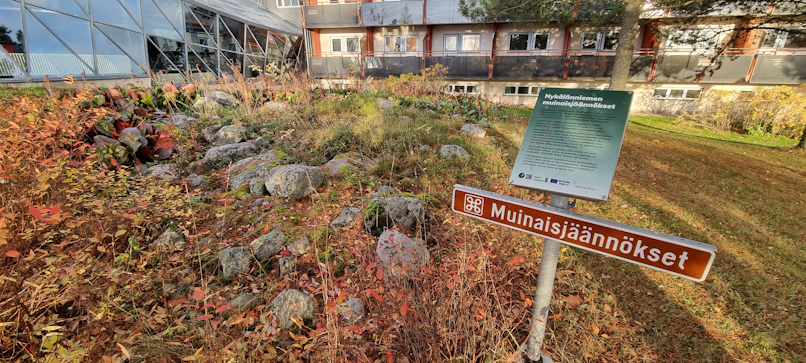
In the winter, you can enjoy the lake while tour skating on the thick ice. The local skating association is in charge of clearing sections from snow so you can experience the crater lake in this magnificent way. If you are going tour skating, make sure to check out tips from Patrik’s post. In some years, locals even create an ice carousel by cutting a section of the ice free and letting it float.
Finding pieces of meteorite?
Identifying whether a rock or object is from a meteorite involves a lot. However, there are some distinguishing features that help you figure out if you may have found a piece of meteorite.
- Is it magnetic?
- Meteorites often contain metallic iron-nickel alloys, and as a result, they can exhibit magnetic properties. Using a strong magnet, you can check if the specimen is attracted to the magnet.
- Is it heavier than other rocks?
- Meteorites are generally denser than most Earth rocks. You can compare the weight of the specimen to its volume. If it is significantly denser than typical Earth rocks, it may be a meteorite.
- Does it have a crust or melted bits?
- Meteorites that have passed through the extreme heat of Earth’s atmosphere. This means there may be a crust, a thin layer of melted and solidified material on their surface. Look for a dark, often black, thin outer layer on the specimen.
- Do you see “thumbprints” on the surface?
- Regmaglypts, sometimes informally called “thumbprints,” are small, bowl-shaped impressions or hollows found on the surface of some meteorites.
- Is the rock grainy?
- Chondrules are tiny, round, or irregularly shaped mineral grains found in some types of meteorites. They are visible as round, distinct features in cross-sections of the meteorite.
- Metallic Flecks:
- Inspect the specimen for metallic flecks or grains. These may be visible on a cut or polished surface and can indicate the presence of metallic alloys. In stones, iron appears as brown “rust”.
If you answered some of these question with YES!, it’s possible the stone is from space. If the stone is large, cut off a tiny bit (a few centimeters), mark down the specific place where you found it (and take a picture), and then take it or send it to the Geological Survey, the University of Helsinki Rock Museum (LUOMUS). Alternatively, you can take it to the Lappajärvi Meteorite Center. They will examine the specimen and tell you later what it is.
Directions to Lappajärvi
Address: You can type Lappajärvi on your navigator.
How to get there:
- Car: An excellent place to observe the lake is at the hotel. Type in Nykäläntie 137, 62600 Lappajärvi on your navigator.
- Bicycle: There are plenty of smaller roads to cycle on while enjoying the lovely Ostrobothnia countryside and the lake.
- Public transport: You can get to Lappajärvi by public transport by going on train to Kauhava train station. There are a few buses that run from Kauhava to Lappajärvi. You can check out timetables from the Route Planner.
Accessibility: The area around hotel Kivitippu and the 1km nature path has well-worn paths suitable for people with limited mobility or children’s prams. Other than this, some areas around Lappajärvi lake are more accessible than others.
When to go: You can visit at any time of the year.
What to wear: Normal walking shoes are fine. Just notice that sometimes the nature path can get slippery.
Facilities: There is a hotel at a peninsula jutting into Lappajärvi lake. However, some facilities may cost extra to use so make sure you check in with reception first.
Make sure you also check out
Since you’re already at Lappajärvi, make sure to check out the Jokikylä nature path at nearby Evijärvi.
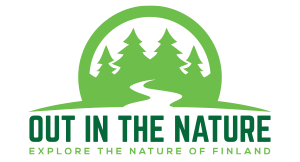
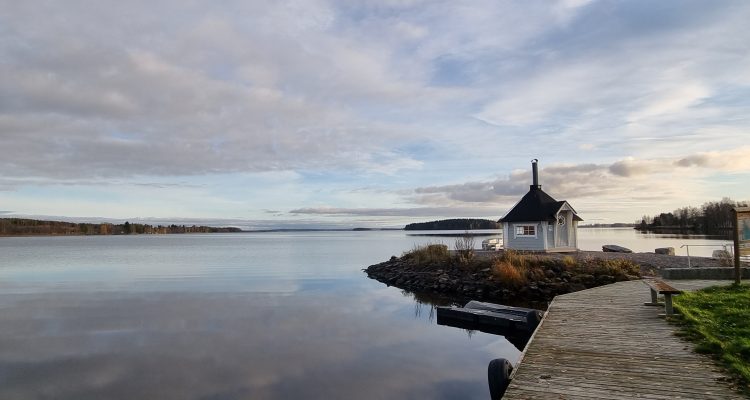
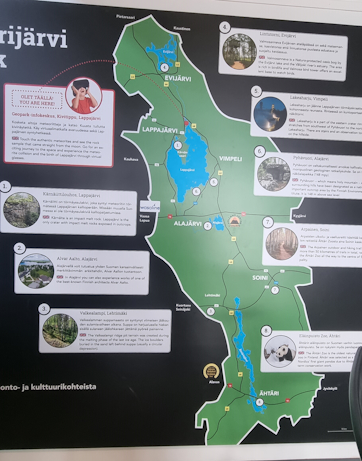
Lappajärvi Crater Surfers will lead your way to the waves of Lappajärvi impact crater.
Good to know! I bet there are many people who want to experience Lappajärvi from that side, too.
Absolutely! Take a look how fantastic wind sports possibilities you will find on Lappajärvi Geopark area: http://www.youtube.com/@CraterSurfer